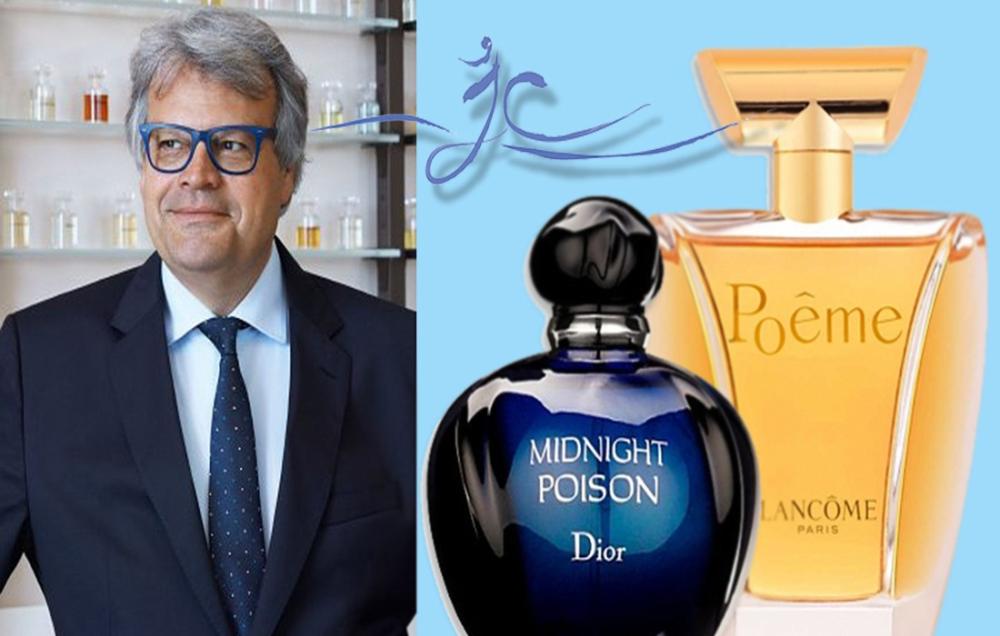
introduction
In the contemporary fragrance scene, few perfumers have combined such popular influence and craftsmanship for so many years as Jacques Cavallier-Pelletrud. A son of Grasse and heir to a perfumery family, he crafted the icons of the 1990s and early 2000s and then spearheaded Louis Vuitton's modern return to fragrance, maintaining a philosophy based on simplicity of thought, purity of material, and longevity.
Grass Roots: Where taste is planted before flowers
Jacques was born in Grasse, France, the cradle of world perfumery. He grew up surrounded by fields of jasmine, roses, and white flowers, in a family that has been working in perfumery for three generations. In that environment, he learned early on that the subtle distinction between small nuances is what makes a great fragrance.
- Smell the raw materials at the source: absolute oils, natural extracts, resins.
- Practice analyzing scents, not just memorizing them: What do they say? How do they change? Where do you want to go?
He studied under experienced perfumers and trained in extraction factories and compounding laboratories, thus blending traditional craftsmanship with a scientific approach.
Formative Years and Achievement: From “Clarity” to Legend
Before his name was associated with Louis Vuitton, Cavalier shone with signatures that became references:
- L'Eau d'Issey (1992): Introduced the concept of aquatic purity in a poetic and clean translation that became a stream in its own right.
- Pasha de Cartier (1992): A masculine, robust, aromatic-woody architecture befitting the majesty of the house.
- Classique – Jean Paul Gaultier (1993): A bold, radiant, floral-oriental femininity.
- Poême – Lancôme (1995): An intense, honeyed floral “poem” with a clever composition of yellow and white flowers.
- M7 – Yves Saint Laurent (2002) (in partnership): One of the first to introduce the oud in a polished style to the Western market.
- Aqva Pour Homme – Bvlgari (2005): An elegant Mediterranean aquatic-citrus signature for men.
What these works have in common: a clear central idea around which the architecture is built, with pure materials left to speak without excessive decoration.
Louis Vuitton: A Return Written from Grasse
In 2012, Jacques became the master perfumer of Louis Vuitton. A historic perfumery headquarters in Grasse (Les Fontaines Parfumées) was restored to serve as his creative laboratory. There, he blends:
- High-quality raw materials and direct contracts with farmers.
- Modern extractions (such as CO₂ extraction) to maintain natural freshness.
- Short value chain: from field and lab to bottle, with one cohesive vision.
Launch Statement (2016)
He introduced seven fragrances that marked the house's comeback:
- Rose des Vents
- Turbulences
- Dans la Peau
- Apogée
- Contre Moi
- Matière Noire
- Mille Feux
Refillable bottles with a pure design, embodying the idea of sustainable luxury.
Expanding the house's fragrance universe
- The Men's Collection (2018): The House's nomadic sense is translated into scents such as L'Immensité, Sur la Route, Orage, Au Hasard, and Nouveau Monde.
- The California Trilogy (2019): Afternoon Swim, Cactus Garden, Sun Song — a sunny read of citrus, tea, and flowers.
- The oriental spirit: Perfumes such as Ombre Nomade and Les Sables Roses presented oud, rose, and incense in a luxurious, quiet interpretation, far from the noise and leaning towards a silky density.
- Later works: Perfumes like Imagination took citrus into a long-breathing “airy-modern” zone.
Jack's philosophy: "Sophisticated simplicity, not poor simplicity."
- Clear idea: Every fragrance begins with a simple mental image (a sea wave, a rose blown by the wind, a Bedouin’s shadow…) which is then musically crafted into a pyramid.
- Honesty of the materials: Jasmine stands out as jasmine, rose as rose—do not drown them out with effects that mask their nature.
- Long-lasting, noiseless sillage: respectful projection on skin and air, neither screaming nor fading quickly.
- Sustainability and Maintainable Luxury: Refilling bottles and caring for supply chains are part of the definition of luxury today.
Why is he considered one of the most important perfumers of the present?
- A long-standing history: from 90s icons to the house's projects today.
- Distinctive Language: You can distinguish Jack's signature even in a crowded market.
- Ideal working environment: He works where materials are grown, extracted and formulated, giving him complete control over quality and concept.
- A balance of elite and mass: fragrances that satisfy refined tastes while remaining wearable every day.
Selected Works (A Quick Guide for Collectors)
- L'Eau d'Issey (1992) – poetic aquatic purity.
- Pasha de Cartier (1992) – Aromatic-woody, formal and elegant.
- Classique (1993) – Bold floral-oriental femininity.
- Poême (1995) – A sophisticated floral-honey intensity.
- M7 (2002) – A polished oud ahead of its time.
- Aqva Pour Homme (2005) – Elegant Mediterranean freshness.
- Louis Vuitton – Les Parfums (2016 and beyond) – The House’s modern statement, with a sophisticated masculine and oriental vein.
conclusion
Jacques Cavallier-Belletrud is not just a successful nose; he is a method. A method that combines Grasse's memory with today's techniques, pure idea with masterful execution. That's why his name has remained present for three decades, and he continues to draw new maps of scents that can be read by the nose and preserved in the memory.
🔗 Discover the legends of perfumes (vintage and contemporary) at Abdul Salam Al Manea store:

